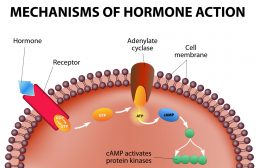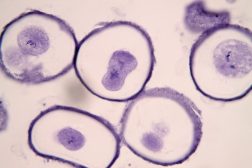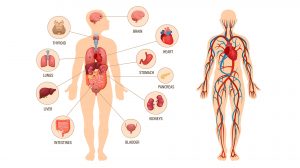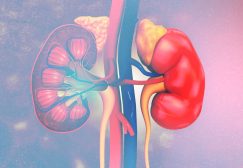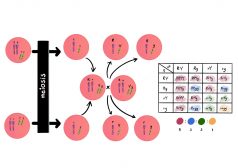Definition
noun, plural: chromomeres
(genetics) One of the beadlike granules that are arranged in a linear series along the eukaryotic chromosome
(anatomy) Granulomere
Supplement
In genetics, chromomere is one of those beadlike granules arranged in a linear series on the chromosomes of eukaryotes. Chromomeres form from the local coiling of a continuous DNA thread. They become more distinct during prophase of both mitosis and meiosis. In meiosis, they are evident as early as the leptotene phase of prophase I especially because the chromosomes are starting to get condensed at this stage. In the next stage, i.e. zygotene, wherein the homologous chromosomes pair up in pairs, the chromomeres aid the homologous chromosomes to align with each other and form homologous rough pairing. Chromomeres contain genes and the arrangement of chromomere structure may be applied in controlling gene expression. Maps of chromomere structure may be made to be used for genetic as well as for evolutionary studies. They may prove useful in locating genes on a chromosome and in analyzing chromosomal aberrations.
In anatomy, chromomere pertains to the central part of a blood platelet. It is also called granulomere because the core of the platelet in stained smears is filled with small purple granules. The granules may be so compact in the central region of the platelet that it may be wrongly perceived as a nucleus. These granules however are evenly distributed in circulating platelets and become compacted from smear preparations. Furthermore, platelets are anucleate bodies. Electron micrographs of the platelet’s granulomere reveals the presence of lysosomes, mitochondria, granules comprised of serotonin, ADP, ATP, calcium, alpha particles (with platelet-specific proteins, fibrinogen, and other clotting factors), actin, myosin, ATPase, and agents for increasing vascular permeability.1
Word origin: chromo- (denoting color) + Greek meros (a part)
Synonym(s):
- idiomere (genetics)
- granulomere (anatomy)
Reference(s):
1 Krause, W. & Krause, W. (2005). Krause’s essential human histology for medical students. Boca Raton: Universal Publishers. p.70.

